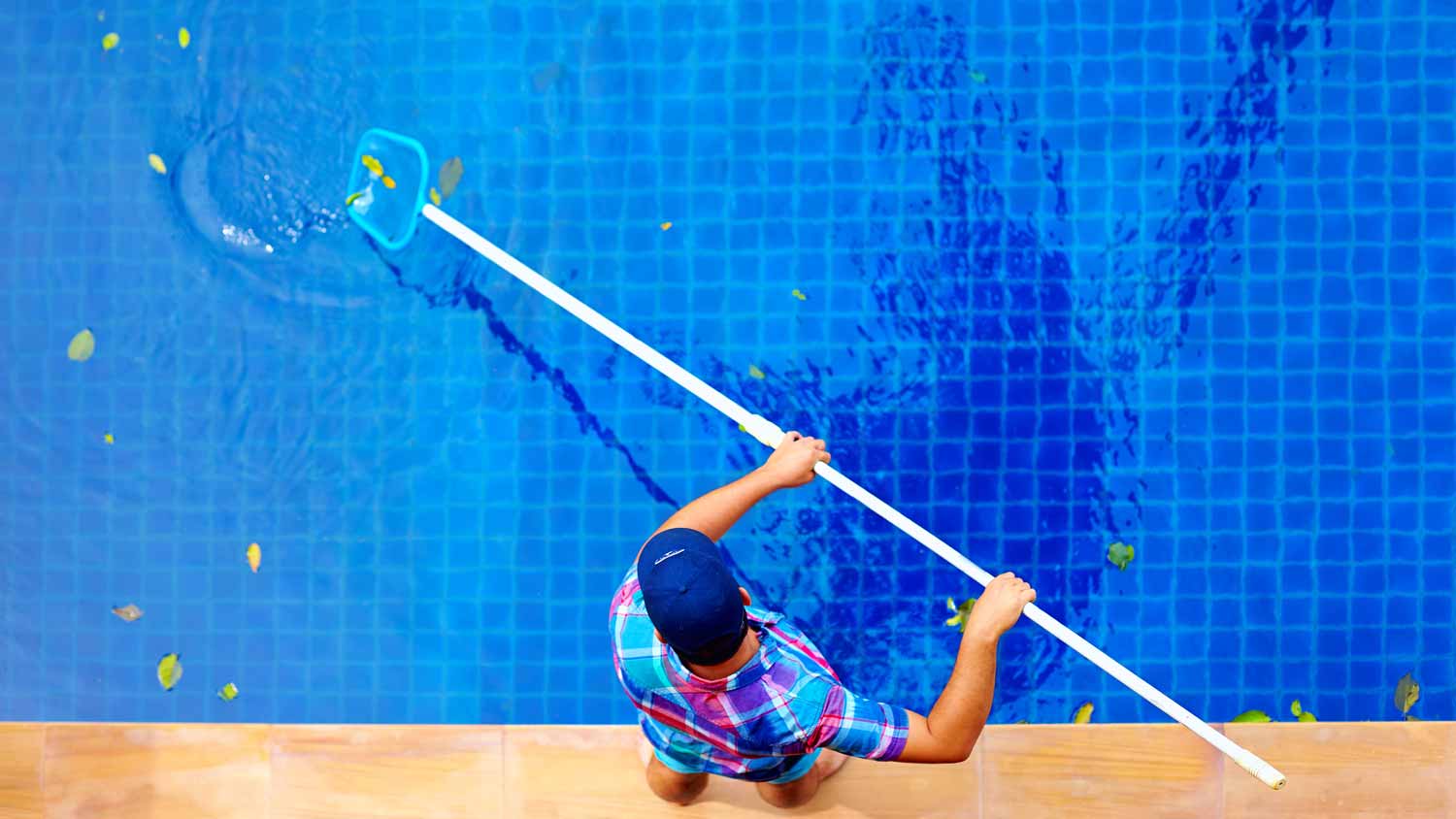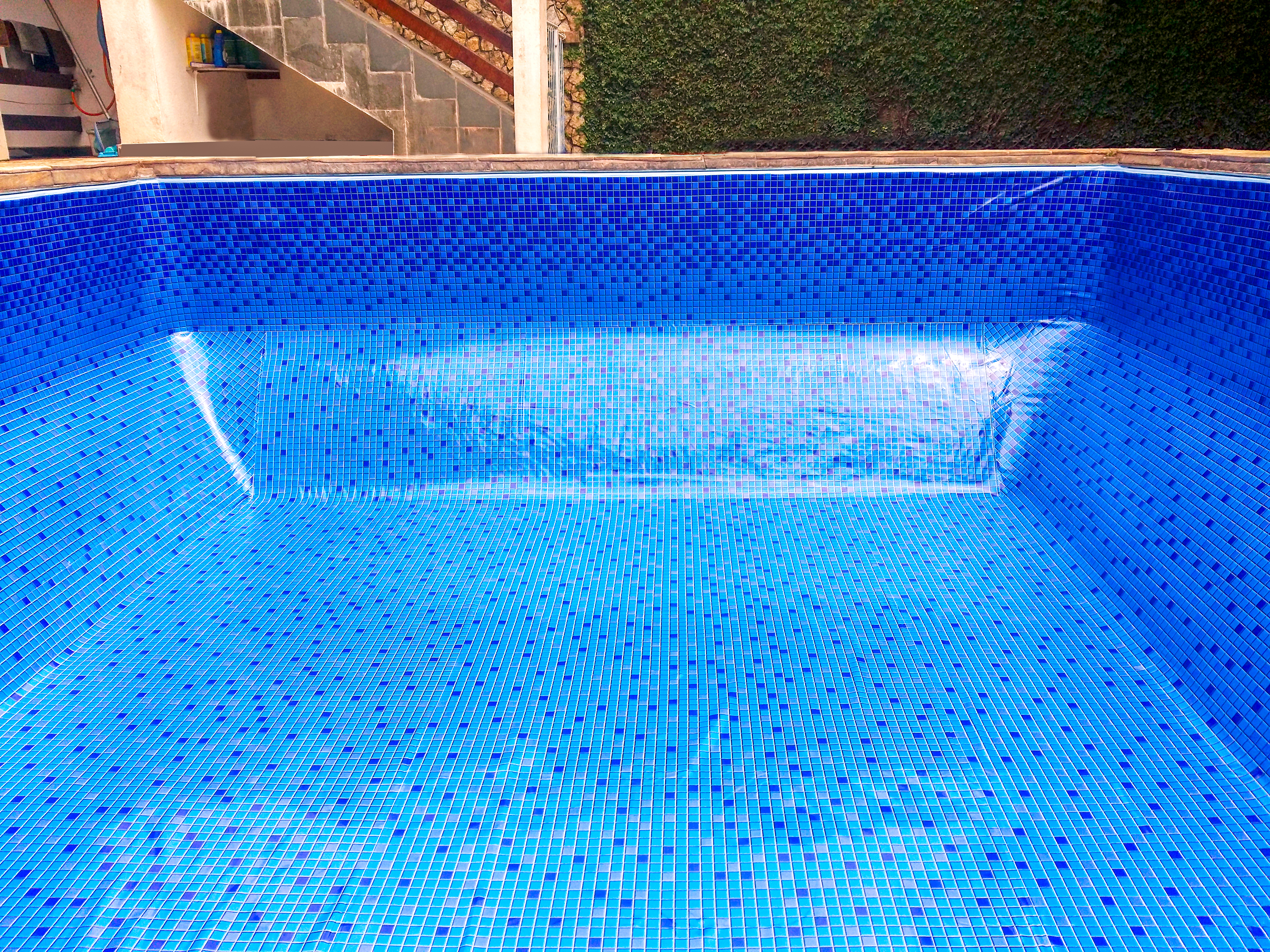
If you’ve been considering installing a new pool in the Buckeye State, this guide will help you understand inground pool costs in Columbus.
Keep your pool sparkling clean and crystal clear


Whether you’re enjoying a relaxing float or swimming your morning laps, you want your pool to be as clean as possible. One important part of pool maintenance is knowing how to vacuum a pool to remove dirt, debris, and algae growth. Vacuum your pool weekly during the swimming season to keep it clean so you can float worry-free. Here’s the best way to tackle this essential task.

Before getting started, you’ll need to make sure you have the right tools for the job. Consult with your pool builder or maintenance pro to find out which is the best vacuum for your pool. You’ll need a heavy-duty model for most in-ground pools, while keeping your above-ground pool clean may require a softer touch with a soft-bristled vacuum. Once you’ve made the initial investment, your pool vacuum will last for years when properly maintained and stored.
Once you have your vacuum and are ready to tackle the task, start by skimming your pool using a skimmer net. Removing large debris with the skimmer first will reduce wear and tear on your pool vacuum. Once you’ve skimmed the pool, remove the skimmer net from the extension pole so you can attach the vacuum head. Then, turn your pool pump on to keep water circulating through the filter as you vacuum.
No time to maintain your pool? Most pool contractors offer seasonal maintenance. Talk to your pro about scheduling check-ups to keep your pool healthy.
To set up your pool vacuum, start by attaching the vacuum head to the extension pole. Next, remove your pool’s skimmer inlet basket or place the vacuum skimmer plate over the basket, depending on how your skimmer is set up. Connect one end of the vacuum hose to the skimmer and submerge the head in the water, holding the open end of the hose. Place the open end of the hose against a water return jet and allow it to fill with water. Once it’s filled, attach the open end of the hose to the skimmer.
Once the vacuum is assembled, choose your filter setting. Leave it on “filter” for light cleaning, or switch it to “waste” if the pool is very dirty, you’re trying to clear cloudy pool water, or you need to remove algae from your pool. If your filter is set to “waste,” you’ll notice the pool’s water level dropping as you work. Set up a garden hose to refill the water while you’re vacuuming.

Starting at one end of your pool, use the extension pole to move the vacuum head along the bottom of the pool, working slowly and in a grid pattern so you ensure you don’t miss a spot. As you work, empty the skimmer basket as needed and keep an eye on the filter pump pressure. If the pressure climbs too high, stop vacuuming and backwash the filter to return the pressure to normal.
If your vacuum head gets stuck, cycle the filter off then on to break the pressure and release the vacuum head. If you lose suction while vacuuming, air has likely entered the system and you’ll need to disconnect the hose from the skimmer, refill it with water from a return jet, and reconnect it. Keep working until you’ve vacuumed the entire pool surface.
After you’ve finished vacuuming, it’s important to disassemble and store the vacuum properly to keep it in good shape and working properly. Remove the vacuum hose from the skimmer and disconnect the hose and extension pole from the vacuum head. Drain the water from the hose, then rinse the vacuum hose and vacuum with fresh water from the garden hose. Once all parts are dry, store them in a covered location out of direct sunlight. Don’t forget to disconnect the garden hose and store it, too.
If you switched your filter to the waste, remember to set it back to the standard filter setting once you’re done. If you didn’t switch the setting, you’ll want to backwash the filter to remove debris before restarting normal use.
To finish up your pool vacuuming session, clear the skimmer inlet of any debris that’s accumulated during vacuuming and replace the basket if you removed it before beginning. Use a pool brush on the extension pole to scrub any remaining spots that the vacuum couldn’t reach or didn’t remove.
The water loss and replacement during vacuuming will affect the pool’s chemical levels, so before using your pool again, test the water and balance the levels as needed. Once the water is balanced, you’re ready to dive back in!
Now that you know how to vacuum a pool, you can decide whether you’re up for the task or want to hire a professional. Swimming pool maintenance costs, on average, around $110 for simple upkeep but can be higher, depending on your needs. In comparison, once you have the proper tools, it won’t cost you anything to vacuum your pool.
Choosing to perform pool maintenance tasks yourself will save money and give you intimate knowledge of your pool, so you can easily detect when something isn’t right and fix it.
However, a local pool service company will also perform water balancing and chemical services that you’d otherwise have to handle yourself, like lowering the pool’s pH or raising the pH as well as adjusting the chlorine levels. Hiring a pool maintenance pro will also help you avoid common pool care mistakes, like not seeing pool surface issues. Weigh the pros and cons to decide what’s best for you and your pool.
Deane Biermeier contributed to this piece.
From average costs to expert advice, get all the answers you need to get your job done.

If you’ve been considering installing a new pool in the Buckeye State, this guide will help you understand inground pool costs in Columbus.

The cost of pool liner replacement in Columbus depends on the size and shape of your pool, as well as the liner material and type. Here’s how the costs break down.

Discover the average cost of an automatic pool cover, key price factors, and expert tips to help you budget for installation or replacement.

Install a pool liner by draining the pool, removing the old liner, and laying the new one. Keep reading to learn how to install a pool liner like a pro.

A broken pool light can be dangerous as well as inconvenient. Learn who to call to fix your pool light safely and correctly.

If you have a tear in your pool liner, it can lead to costly problems if you don’t repair it. Find out how to patch a pool liner in just a few simple steps.